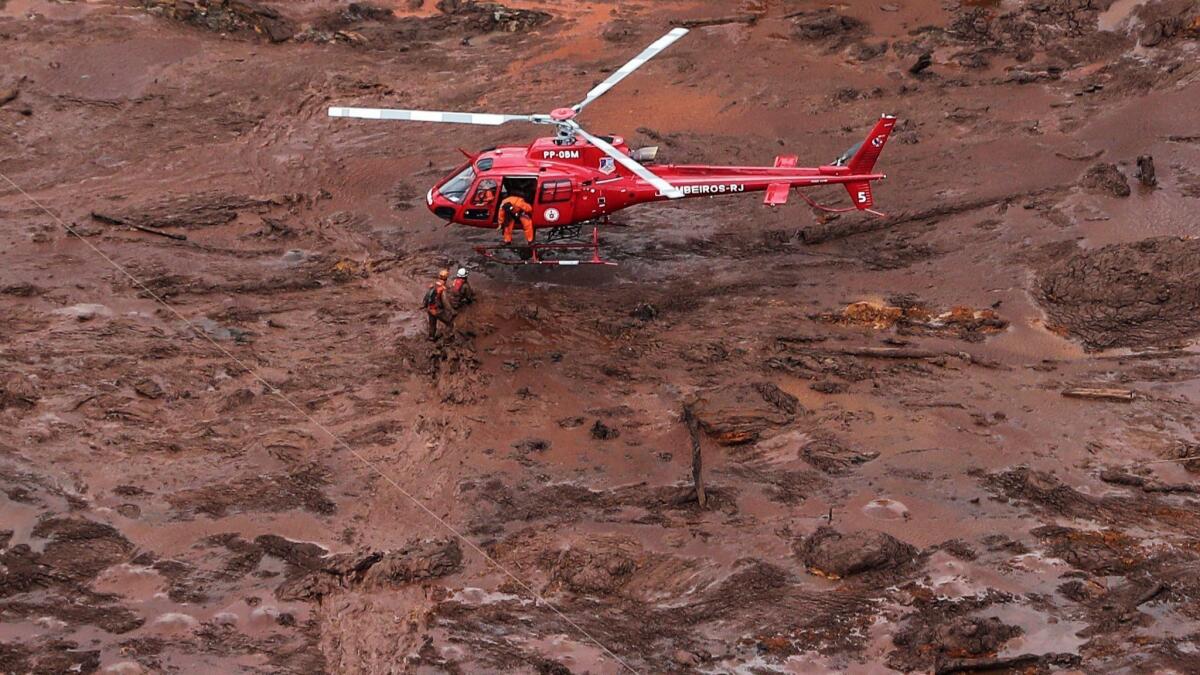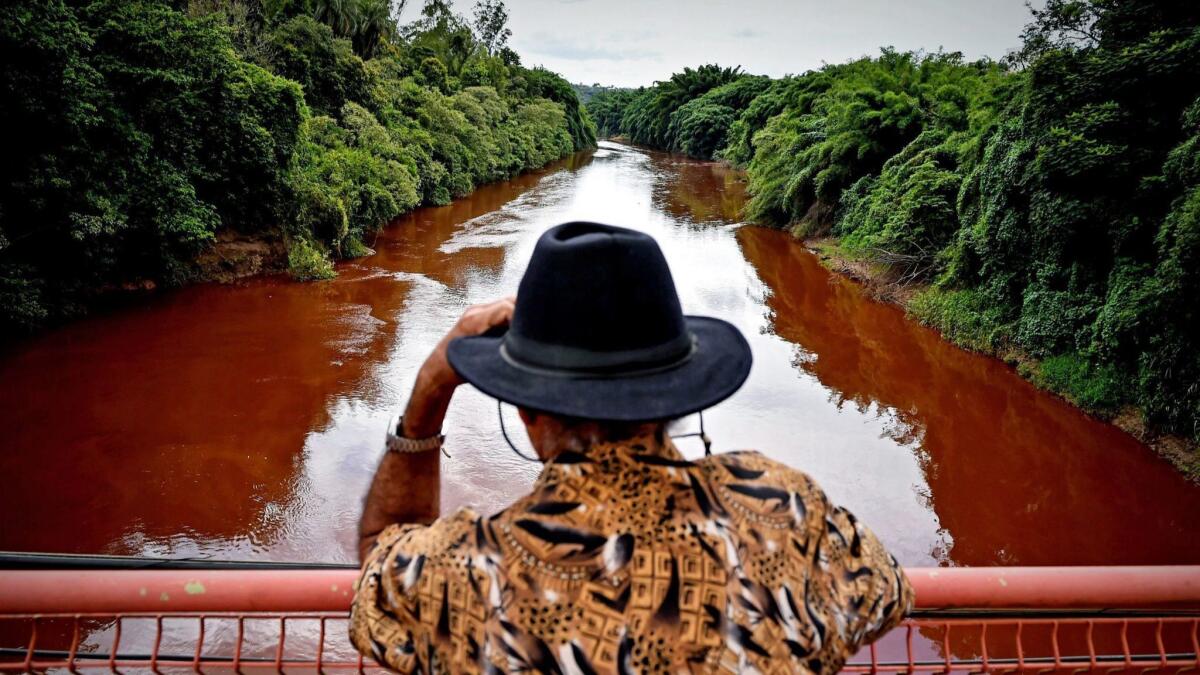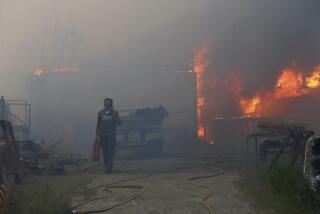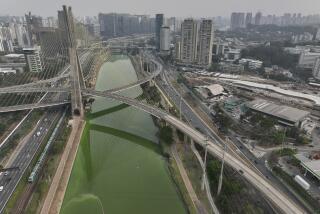Brazil dam collapse leaves at least 40 dead and scores missing

- Share via
Reporting from Sao Paulo, Brazil — Rescuers in helicopters searched for survivors Saturday in a huge area in southeastern Brazil buried by mud from the collapse of a dam holding back mine waste, with at least 40 people dead and up to 300 missing.
A day after the disaster happened, finding many more survivors was looking increasingly unlikely.
“Most likely, from now on we are mostly going to be recovering bodies,” said Romeu Zema, the governor of the state of Minas Gerais.
Workers with Brazilian mining company Vale were eating lunch Friday afternoon when the dam collapsed, unleashing a sea of reddish-brown mud that knocked over and buried several structures of the company and surrounding areas.
The status of the workers and others in the city of Brumadinho was unknown Saturday, but the level of devastation quickly led President Jair Bolsonaro and other officials to describe it as a “tragedy.”
In addition to the 40 bodies recovered, 23 people were hospitalized, said authorities with the Minas Gerais fire department. There had been some signs of hope earlier Saturday when authorities found 43 more people alive. Company officials also had said that 100 workers were accounted for.
But the company said in a statement Saturday afternoon that more than 200 workers were still missing, while fire officials at one point estimated the total number at close to 300.

Vale Chief Executive Fabio Schvartsman said he did not know what caused the collapse.
“The principal victims were our own workers,” Schvartsman said during a news conference Friday evening, adding that the restaurant where many ate “was buried by the mud at lunchtime.”
After the dam collapsed in the afternoon, parts of Brumadinho were evacuated, and firefighters rescued people by helicopter and ground vehicles. The TV Record channel showed a helicopter hovering inches off the ground as it pulled people covered in mud out of the waste.
Photos showed rooftops poking above an extensive field of the mud, which also cut off roads. The flow of waste reached the nearby community of Vila Ferteco and a Vale administrative office, where employees were present.
“I’ve never seen anything like it,” Josiele Rosa Silva Tomas, president of Brumadinho resident’s association, told the Associated Press by phone Friday night. “It was horrible … the amount of mud that took over.”
Silva Tomas said she was awaiting news of her cousin, and many she knew were trying to get news of loved ones.
Another dam administered by Vale and Australian mining company BHP Billiton collapsed in 2015 in the city of Mariana in Minas Gerais state, resulting in 19 deaths and forcing hundreds from their homes.
Considered the worst environmental disaster in Brazilian history, it left 250,000 people without drinking water and killed thousands of fish. An estimated 16 billion gallons of waste flooded rivers and eventually flowed into the Atlantic Ocean.
Schvartsman said what happened Friday was “a human tragedy much larger than the tragedy of Mariana, but probably the environmental damage will be less.”
Bolsonaro, who assumed office Jan. 1, said he lamented the accident and sent three Cabinet ministers to the area.
“We will take all the possible steps to minimize the suffering of families and victims,” Bolsonaro said in a speech, which he posted on Twitter.
Bolsonaro planned to tour the area by helicopter Saturday. The far-right leader campaigned on promises to jump-start Brazil’s economy, in part by deregulating mining and other industries.
Environmental groups and activists said the latest spill underscored a lack of regulation.
The spill “is a sad consequence of the lessons not learned by the Brazilian government and the mining companies responsible for the tragedy with Samarco dam, in Mariana, also controlled by Vale,” Greenpeace said in a statement.
“History repeats itself,” tweeted Marina Silva, a former environmental minister and three-time presidential candidate. “It’s unacceptable that government and mining companies haven’t learned anything.”
The rivers of mining waste raised fears of widespread contamination.
According to Vale’s website, the mine waste, often called tailings, is composed mostly of sand and is nontoxic. However, a U.N. report found that the waste from the 2015 disaster “contained high levels of toxic heavy metals.”
Vale is Brazil’s largest mining company. Two hours after the accident, its stock fell 10% on the New York Stock Exchange.
More to Read
Sign up for Essential California
The most important California stories and recommendations in your inbox every morning.
You may occasionally receive promotional content from the Los Angeles Times.









